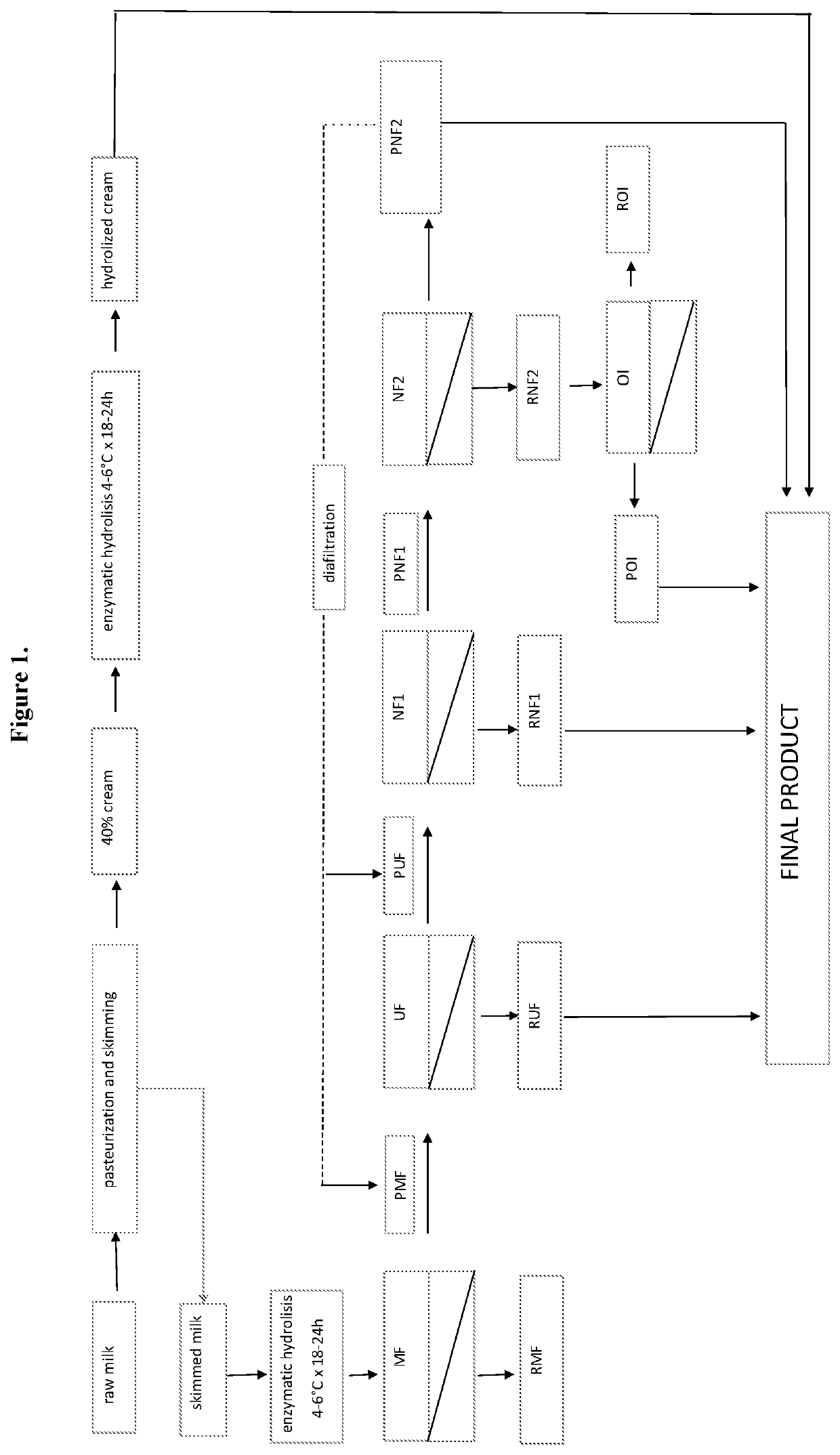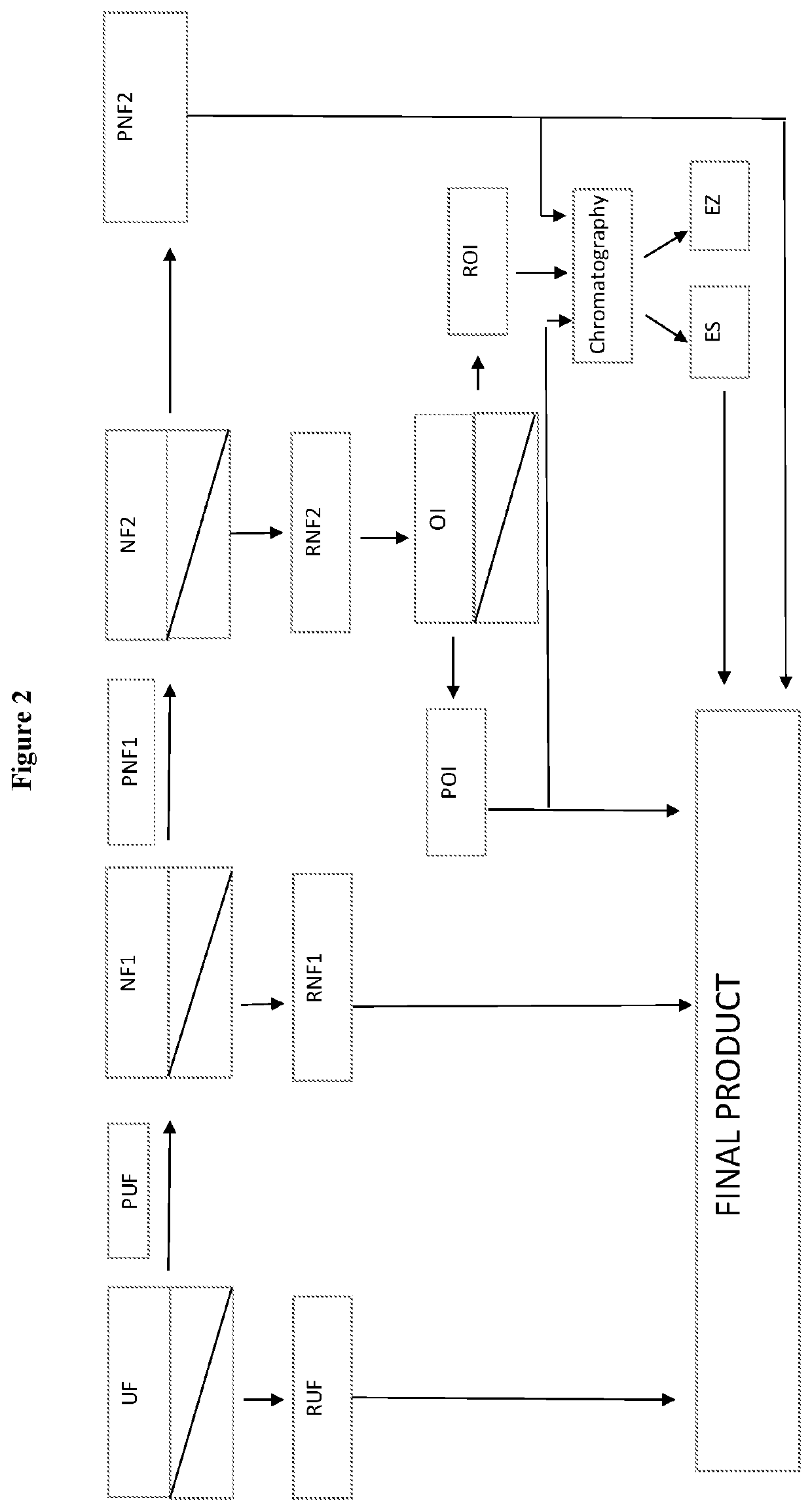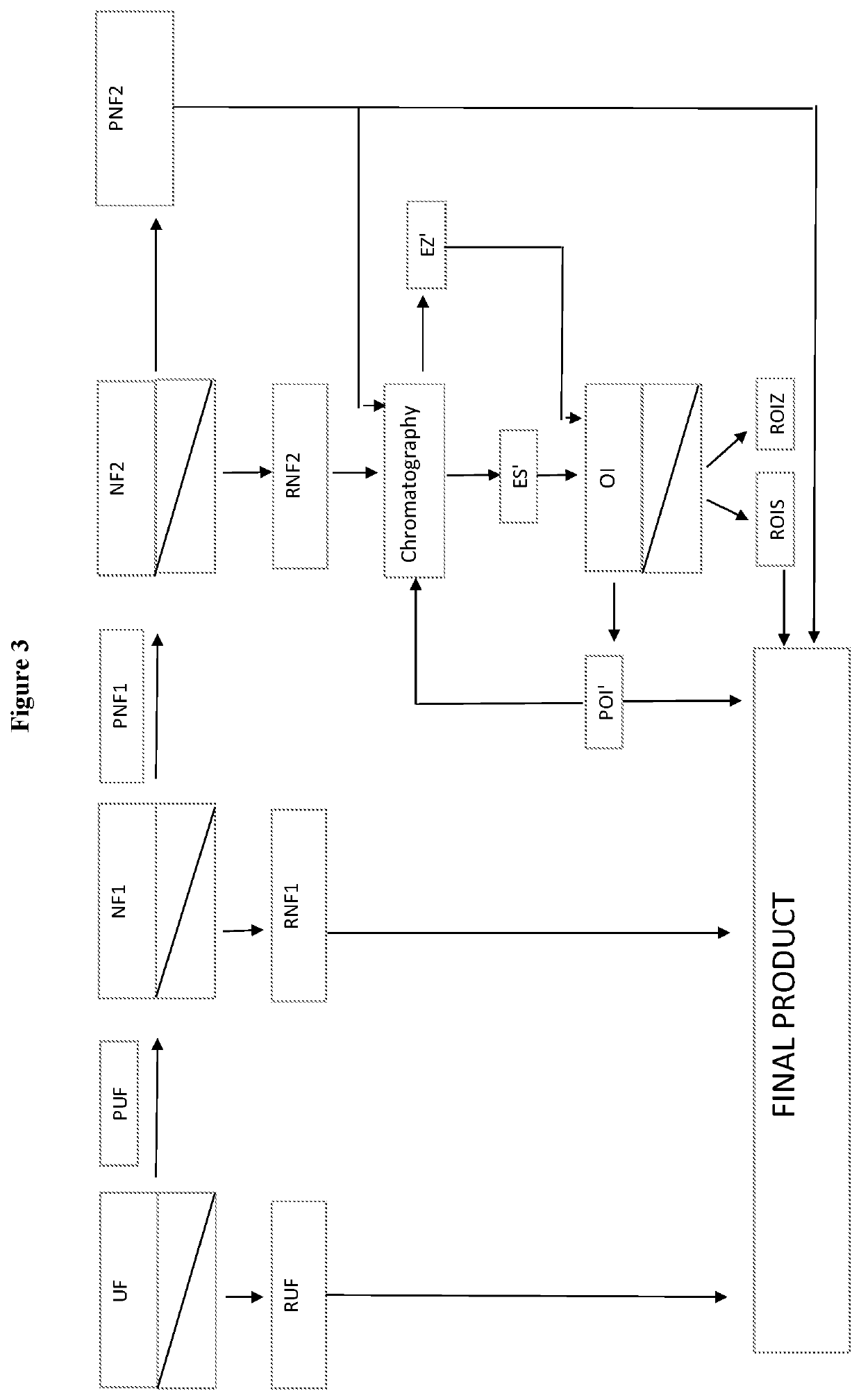Process for preparing a lactose-free milk
a technology of lactose-free milk and process, which is applied in the field of lactose-free milk preparation, can solve the problems of low energy consumption, reduced consumption of milk and fresh dairy products, and reduced daily intake of macro and micronutrients precious for a healthy eating, and achieves the effect of low rejection ra
- Summary
- Abstract
- Description
- Claims
- Application Information
AI Technical Summary
Benefits of technology
Problems solved by technology
Method used
Image
Examples
example no.1
Example No. 1: Preparation of High-Pasteurized Lactose-Free ESL Partially Skimmed Milk
[0089]Raw milk has been subjected to pasteurization and centrifugal separation, thus obtaining skimmed milk and 40% fat cream.
[0090]The cream was pasteurized and cooled to 4-6° C.; after addition of lactase (MAXILAT LGi-DSM, 0.7%) the lactose was fully hydrolysed to glucose and galactose in 18 hours at the temperature of 4-6° C. In this way, a 40% fat pasteurized hydrolysed cream was obtained, to be used later for the formulation of the finished product.
[0091]The skimmed milk, cooled at the temperature of 4-6° C., was added with lactase in a concentration of 4.5 g / l, thus obtaining the complete hydrolysis of lactose (residual lactose <0.01%) after 18 hours.
[0092]The lactose-free skimmed milk (HSM) was then heated to a temperature of 45° C. and microfiltered on a 1.4 μm ceramic membrane plant (VCR=200).
[0093]The thus obtained microfiltration permeate (i.e. the microfiltered, lactose-free, skimmed mi...
example no.2
Example No. 2: Preparation of Lactose-Free UHT Whole Milk
[0100]Raw milk was subjected to pasteurization and centrifugal separation, thus obtaining skimmed milk and 40% fat cream.
[0101]The cream was pasteurized and cooled to 4° C.; after addition of lactase (MAXILAT LGi-DSM, 0.7%) the lactose was fully hydrolysed to glucose and galactose in 24 hours at a temperature of 4° C. This allowed obtaining a 40% fat, pasteurized, hydrolysed cream to be used later for the formulation of the finished product.
[0102]The skimmed milk was heated to 50° C. and microfiltered on a 1.4 μm ceramic membrane plant (VCR=200).
[0103]The microfiltration permeate was cooled to 4° C. and subjected to the same hydrolysis temperature by addition of lactase (MAXILAT LGi-DSM) at a concentration of 2.1 g / l for 24 hours, until obtaining a lactose residual content lower than 0.01%. The thus obtained microfiltered lactose-free hydrolysed skimmed milk (MHSM) passed, after heating to 50° C., to the subsequent ultrafiltra...
example no.3
Example No. 3: Preparation of Lactose-Free High Protein High-Pasteurized ESL Skimmed Milk
[0112]Raw milk was subjected to pasteurization and centrifugal separation, thus obtaining skimmed milk and 40% fat cream.
[0113]The skimmed milk, cooled at the temperature of 4° C., was added with lactase (MAXILAT LGi-DSM) at a concentration of 4.5 g / l, thus obtaining the complete hydrolysis of lactose (residual lactose <0.01%) in 12 hours.
[0114]The lactose-free skimmed milk was then heated to 50° C. and microfiltered on a 1.4 μm ceramic membrane plant (VCR=200). The thus obtained microfiltration permeate (microfiltered, lactose-free, skimmed milk MHSM) was sent directly to the next ultrafiltration step on a wound spiral polymer membrane plant (Microdyn-Nadir Spira-cel IS UH030 4040 C1, MWCO=30 kDa, VCR=4.5).
[0115]RUF, which contains all protein components of MHSM, was cooled to 4° C. and stored at this temperature until its use for the formulation of the finished product.
[0116]PUF was instead co...
PUM
 Login to View More
Login to View More Abstract
Description
Claims
Application Information
 Login to View More
Login to View More - R&D
- Intellectual Property
- Life Sciences
- Materials
- Tech Scout
- Unparalleled Data Quality
- Higher Quality Content
- 60% Fewer Hallucinations
Browse by: Latest US Patents, China's latest patents, Technical Efficacy Thesaurus, Application Domain, Technology Topic, Popular Technical Reports.
© 2025 PatSnap. All rights reserved.Legal|Privacy policy|Modern Slavery Act Transparency Statement|Sitemap|About US| Contact US: help@patsnap.com



